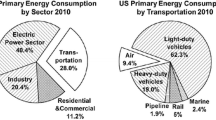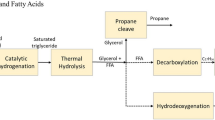Abstract
Today, research performed for new aircraft propulsion concepts is driven by the requirement of achieving significant emission reductions to meet the environmental objectives of future air traffic. A current trend visible in the aviation industry shows the attempt to reduce inflight emissions as well as overall energy consumption of conventional combustion engines through electrification via electrical energy sources. With the growing interest in novel hybrid electric propulsion concepts, in the same way, a demand for conceptual design and performance simulation methods in combination with analysis capabilities rises. Based on primarily introduced and discussed hybrid electric propulsion systems, this paper presents a set of aircraft propulsion system simulation (APSS) methods which allow for an integrated simulation and consistent analysis. Particularly, methods for the modelling of electric motor and battery systems as implemented in APSS are described in detail.






Similar content being viewed by others
Notes
In the following referred to as sub-system(s).
The power share, here, directly correlates with the degree of electrification (DE) [16] that is discussed in Chapter 6.
The presented functional correlations of the auxiliary coordinates α and β are only an example for a feasible transformation. For strongly differing electric motor characteristics compared to what is presented in this paper, more adequate correlations of α and β might be selected, however, the method presented remains valid.
Typical charging procedures refer to as constant current (CV), constant voltage (CV) and constant current, constant voltage (CCCV) [38].
Note: Finding the derivative of a product of two functions requires the use of the rule of product, i.e. \( \left( {u \cdot v} \right)' = u^{'} \cdot v + u \cdot v'. \)
Depletion time is the ratio of actual available energy over actual delivered power, thus, depicts the remaining discharging time for the actual capacity.
During the constant-power cruise (CR) phase current is continuously increasing due to decreasing voltage, but here, the current-capacity gradient is too small to be clearly visible with the given printing solution of Fig. 5.
References
Freeh, J.E., Liang, A.D., Berton, J.J., Wickenheiser, T.J.: Electrical systems analysis at nasa glenn research center: status and prospects. NASA Technical Memorandum, Glenn Research Center, Cleveland, Ohio, USA, (2003). NASA/TM-2003-212520
Kuhn H., Sizmann, A.: Fundamental prerequisites for electric flying. In: Proceedings of the 61st Deutscher Luft- und Raumfahrt Kongress (DLRK), Berlin, Germany, (2012)
Kuhn, H., Seitz, A.,Lorenz, L., Isikveren, A.T., Sizmann, A.: Progress and perspectives of electric air transport. In: Proceedings of the 28th International Congress of the Aeronautical Sciences (ICAS), Brisbane, Australia, (2012)
Gieras, J.F.: Superconducting electrical machines state of the art. Przeglad Elektrotechniczny (electrical review) 85(12), 1–19 (2009)
Masson, P.J., Soban, D.S., Upton, E., Pienkos, J.E., Luonga, C.A.: HTS motors in aircraft propulsion: design considerations. IEEE Trans. Appl. Supercond. 15(2), 2218–2221 (2005). doi:10.1109/TASC.2005.849616
Masson, P.J., Brown, G.V., Soban, D.S., Luongo, C.A.: HTS machines as enabling technology for all-electric airborne vehicles. Supercond. Sci. Technol. 20(8), 748–756 (2007). doi:10.1088/0953-2048/20/8/005
Brown,G.V., Kascak, A.F., Ebihara, B., Johnson, D., Choi, B., Siebert, M., Buccieri, C.: NASA Glenn Research Center Program in high power density motors for aeropropulsion. NASA Technical Memorandum, Glenn Research Center, Cleveland, Ohio, USA, (2005). NASA/TM-2005-213800
Seitz, A., Schmitz, O., Isikveren, A.T., Hornung, M.: Electrically powered propulsion: comparison and contrast to gas turbines. In: Proceedings of the 61st Deutscher Luft und Raumfahrt Kongress (DLRK), Berlin, Germany, (2012)
Pornet, C., Gologan, C., Vratny, P.C., Seitz, A., Schmitz, O., Isikveren A.T., Hornung, M.: Methodology for sizing and performance assessment of hybrid energy aircraft. In: Proceedings of the 13th AIAA Aviation Technology, Integration, and Operations Conference (ATIA), Los Angeles, USA, (2013). doi:10.2514/6.2013-4415
Advisory Council for Aviation Research and Innovation in Europe (ACARE). Realising Europe’s vision for aviation: Strategic Research and Innovation Agenda (SRIA), vol 1, (2012)
European Commission (EC). Flightpath 2050: Europe’s Vision for Aviation, Report of the High Level Group on Aviation Research. Publications Office of the European Union, Luxembourg, (2011)
Visionary Aircraft Concepts (VAC) Group. Concept 002: Initial technical assessment of an electrically-powered, medium-capacity, short-haul transport aircraft. Bauhaus Luftfahrt e.V., (2012). Internal Report IB-12021
Hung, J.Y., Gonzalez, L.F.: On parallel hybrid-electric propulsion system for unmanned aerial vehicles. IEEE Trans. Industr. Electron. 51, 1–17 (2012). doi:10.1016/j.paerosci.2011.12.001
Isikveren, A.T., Seitz, A., Vratny, P., Pornet, C., Plötner, K.O., Hornung, M.: Conceptual studies of universally-electric systems architectures suitable for transport aircraft. In: Proceedings of the 61st Deutscher Luft- und Raumfahrt Kongress (DLRK), Berlin, Germany, (2012)
Berton, J.J., Freeh, J.E., Wickenheiser, T.J.: An analytical performance assessment of a fuel cell-powered, small electric airplane. NASA Technical Memorandum, Glenn Research Center, Cleveland, Ohio, USA, (2003). NASA/TM-2003-212393
Schmitz, O., Hornung, M.: Unified applicable propulsion system performance metrics. J. Eng. Gas Turbines Power 135(11), 1–9 (2013). doi:10.1115/1.4025066
Lorenz, L., Seitz, A., Kuhn, H., Sizmann, A.: Hybrid power trains for future mobility. In: Proceedings of the 62nd Deutscher Luft- und Raumfahrt Kongress (DLRK), Stuttgart, Germany, (2013)
Steiner, H.-J., Vratny, P.C., Gologan, C., Wieczorek, K., Isikveren, A.T., Hornung, M.: Performance and sizing of transport aircraft employing electrically-powered distributed propulsion. In: Proceedings of the 61st Deutscher Luft- und Raumfahrtkongress (DLRK), Berlin, Germany, (2012)
Walsh, P.P., Fletcher, P,: Gas Turbine Performance. Blackwell Publishers, 2nd edn, 2004. ISBN-13: 978-0-6320-6434-2
Schmitz, O.: Fahrzeugtriebwerk, Fahrzeug mit diesem Fahrzeugtriebwerk und Verfahren zum Betrieb dieses Fahrzeugtriebwerkes. Patent Application, submitted 30th July 2012, first publication 30th (2014). Patent DE 10 2012 015 104 A1 2014.01.30
The Mathworks, Inc. Matlab. Version R2013a (8.1.0.47), November, (2012). http://www.mathworks.de/products/matlab/
Reed, J.A., Afjeh, A.A.: Computational simulation of gas turbines: part 1—Foundations of component-based models. J. Eng. Gas Turbines Power 122(3), 366–376 (2000). doi:10.1115/1.1287490
Seitz, A.: Advanced methods for propulsion system integration in aircraft conceptual design. PhD thesis, Institut für Luft- und Raumfahrt, Technische Universität München, Germany, (2011)
Kurzke, J.: GasTurb 11. Germany, (2010)
Kurzke, J.: GasTurb Details 5. Germany, (2007)
Sanford, G., McBride,B.J.: computer program for calculation of complex chemical equilibrium compositions and applications, I. analysis. NASA Technical Report, Lewis Research Center, Cleveland, Ohio, USA, (1994). NASA-RP-1311
Wortmann, G., Schmitz, O., Hornung, M.: Comparative assessment of transient characteristics of conventional and hybrid gas turbine engine. CEAS Aeronaut. J. 5(2), 209–223 (2014). doi:10.1007/s13272-014-0101-8
Kurzke, J.: Performance modeling methodology: efficiency definitions for cooled single and multistage turbines. In: Proceedings of the ASME Turbo Expo: Power for Land, Sea, and Air, Amsterdam, Netherlands, pp. 85–92, (2002). doi:10.1115/GT2002-30497
Lewis, R.I.: Turbomachinery Performance Analysis. Elsevier Science & Technology Books, (1996)
Faid, S., Debal, P., Bervoets, S.: Development of a switched reluctance motor for automotive traction applications. In: Proceedings of the 25th World Battery, Hybrid and Fuel Cell Electric Vehicle Symposium & Exhibition, Shenzhen, China, (2010)
Odvářka, E., Mebarki, A., Gerada, D., Brown, N., Ondrůšek, C.: Electric motor-generator for a hybrid electric vehicle. Eng. Mech. 16(2):131–139, (2009). http://dlib.lib.cas.cz/5309/
Lukic, S.M., Emado, A.: Modeling of electric machines for automotive applications using efficiency maps. In: Proceedings of the Electrical Insulation Conference and Electrical Manufacturing and Coil Winding Technology Conference, pp. 543–550, (2003). doi:10.1109/EICEMC.2003.1247945
Baik, S.K., Kwon, Y.K., Kim, H.M., Lee, J.D., Kim, Y.C., Park, H.J., Kwon, W.S., Park, G.S.: Loss analysis of a 1 MW class HTS synchronous motor. J. Phys: Conf. Ser. 153(1), 1–9 (2009). doi:10.1088/1742-6596/153/1/012003
Chen, M., Rincón-Mora, G.A.: Accurate electrical battery model capable of predicting runtime and I–V performance. IEEE Trans. Energy Convers. 21(2), 504–511 (2006). doi:10.1109/TEC.2006.874229
Dormand, J.R., Prince, P.J.: A family of embedded Runge–Kutta formulae. J. Comp. Appl. Math. 6(1), 19–26 (1980). doi:10.1016/0771-050X(80)90013-3
Gao, L., Liu, S.: Dynamic lithium-ion battery model for system simulation. IEEE Trans. Compon. Packag. Technol. 25(3), 495–505 (2002). doi:10.1109/TCAPT.2002.803653
Erdinc, O., Vural, B., Uzunoglu, M.: A dynamic lithium-ion battery model considering the effects of temperature and capacity fading. In: Proceedings of the International Conference on Clean Electrical Power, Capri, New York, USA, pp. 383–386, (2009). doi:10.1109/ICCEP.2009.5212025
Krieger, E.M., Arnold, C.B.: Effects of undercharge and internal loss on the rate dependence of battery charge storage efficiency. J. Power Sour. 210(2), 286–291 (2012). doi:10.1016/j.jpowsour.2012.03.029
Ramadass, P., Haran, B., White, R., Popov, B.N.: Mathematical modeling of the capacity fade of Li-ion cells. J. Power Sour. 123(2), 230–240 (2003). doi:10.1016/S0378-7753(03)00531-7
Vratny, P.C., Gologan, C., Pornet, C., Isikveren, A.T., Hornung, M.: Battery pack modeling methods for universally-electric aircraft. In: Proceedings of the 4th CEAS Air & Space Conference, FTF Congress: Flygteknik, (2013)
Baehr, H.D.: Thermodynamik. Springer, Berlin (1981)
Acknowledgments
The authors would like to thank Sascha Kaiser, Holger Kuhn and Patrick Vratny from Bauhaus Luftfahrt for fruitful discussions and valuable advice.
Author information
Authors and Affiliations
Corresponding author
Rights and permissions
About this article
Cite this article
Schmitz, O., Hornung, M. Methods for simulation and analysis of hybrid electric propulsion systems. CEAS Aeronaut J 6, 245–256 (2015). https://doi.org/10.1007/s13272-014-0137-9
Received:
Revised:
Accepted:
Published:
Issue Date:
DOI: https://doi.org/10.1007/s13272-014-0137-9




